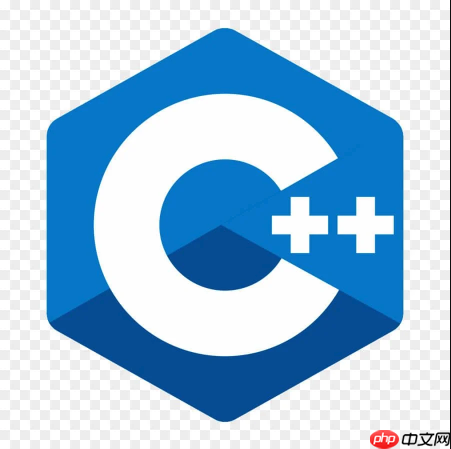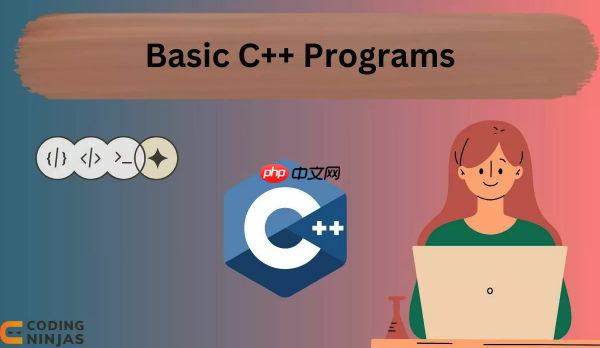智能指针优化移动语义的核心在于减少不必要的引用计数操作,1.通过移动构造和移动赋值实现资源所有权的高效转移,避免复制数据和增加引用计数;2.使用std::move显式将左值转换为右值引用以调用移动操作;3.避免copy-on-write策略以减少多线程环境下的同步开销;4.在必要时自定义智能指针进行延迟引用计数更新、原子操作和特定类型优化;5.根据所有权模型选择合适的智能指针类型(如std::unique_ptr用于独占所有权,std::shared_ptr用于共享所有权,std::weak_ptr用于打破循环引用);6.在多线程环境下利用std::shared_ptr线程安全的引用计数机制并配合额外同步保护对象访问;7.解决循环引用问题应使用std::weak_ptr打破循环以确保对象正确析构。

智能指针优化移动语义,核心在于减少不必要的引用计数操作,尤其是在对象所有权转移时。通过巧妙的设计,可以避免频繁的增加和减少引用计数,从而提升性能。

减少引用计数操作的性能技巧:

利用移动构造和移动赋值
移动语义允许我们高效地转移资源的所有权,而无需复制数据。对于智能指针来说,这意味着我们可以避免增加新的引用计数,只需将内部指针和引用计数的所有权转移给新的智能指针对象。

#include <iostream>
#include <memory>
class MyObject {
public:
MyObject() { std::cout << "MyObject constructed" << std::endl; }
~MyObject() { std::cout << "MyObject destructed" << std::endl; }
};
int main() {
std::unique_ptr<MyObject> ptr1(new MyObject());
std::unique_ptr<MyObject> ptr2 = std::move(ptr1); // 所有权转移,ptr1不再拥有对象
if (ptr1 == nullptr) {
std::cout << "ptr1 is now null" << std::endl;
}
return 0;
}在
std::unique_ptr
unique_ptr
unique_ptr
使用std::move
std::move
#include <iostream>
#include <memory>
int main() {
std::shared_ptr<int> ptr1 = std::make_shared<int>(10);
std::shared_ptr<int> ptr2 = std::move(ptr1);
std::cout << "ptr1 use count: " << ptr1.use_count() << std::endl; // 可能为0,也可能不为0,取决于编译器优化
std::cout << "ptr2 use count: " << ptr2.use_count() << std::endl; // 1 (或2,如果 ptr1 仍然存活)
return 0;
}在这个例子中,
ptr1
ptr2
shared_ptr
std::move
Copy-on-Write (COW) 策略的考量
虽然 COW 策略在某些情况下可以减少复制开销,但它也引入了额外的复杂性,尤其是在多线程环境中。在智能指针的上下文中,COW 可能会导致不必要的引用计数操作和同步开销。现代 C++ 倾向于避免 COW,而选择更直接的移动语义。
自定义智能指针的优化
如果标准库的智能指针无法满足性能需求,可以考虑自定义智能指针。在自定义智能指针中,可以根据具体的使用场景进行优化,例如:
如何选择合适的智能指针?
选择合适的智能指针取决于对象的所有权模型。
std::unique_ptr
unique_ptr
std::shared_ptr
shared_ptr
shared_ptr
std::weak_ptr
shared_ptr
智能指针在多线程环境下如何保证线程安全?
std::shared_ptr
shared_ptr
shared_ptr
std::unique_ptr
智能指针的循环引用问题及其解决方案
循环引用是指两个或多个智能指针相互持有对方,导致对象无法被正确释放。例如:
#include <iostream>
#include <memory>
class A;
class B;
class A {
public:
std::shared_ptr<B> b;
~A() { std::cout << "A destructed" << std::endl; }
};
class B {
public:
std::shared_ptr<A> a;
~B() { std::cout << "B destructed" << std::endl; }
};
int main() {
std::shared_ptr<A> a = std::make_shared<A>();
std::shared_ptr<B> b = std::make_shared<B>();
a->b = b;
b->a = a; // 循环引用
return 0; // A 和 B 都不会被析构
}要解决循环引用问题,可以使用
std::weak_ptr
weak_ptr
#include <iostream>
#include <memory>
class A;
class B;
class A {
public:
std::shared_ptr<B> b;
~A() { std::cout << "A destructed" << std::endl; }
};
class B {
public:
std::weak_ptr<A> a; // 使用 weak_ptr
~B() { std::cout << "B destructed" << std::endl; }
};
int main() {
std::shared_ptr<A> a = std::make_shared<A>();
std::shared_ptr<B> b = std::make_shared<B>();
a->b = b;
b->a = a; // 循环引用
return 0; // A 和 B 都会被析构
}在这个修改后的例子中,
B
std::weak_ptr
A
A
B
以上就是智能指针如何优化移动语义 减少引用计数操作的性能技巧的详细内容,更多请关注php中文网其它相关文章!

Copyright 2014-2025 https://www.php.cn/ All Rights Reserved | php.cn | 湘ICP备2023035733号